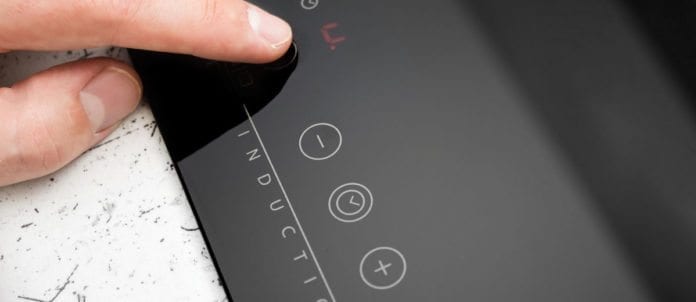Induction cooktops are enjoying their time in the spotlight, and for good reason. Both chefs and manufacturers are endorsing this trendy new method, finding it to be a more efficient, more precise, safer and more flexible way to cook than conventional methods such as gas or electric.
This flame-free cooking option works by generating an electric current when the unit is powered on and a compatible cooking vessel is present. Alternating magnetic fields affect the molecules in the cookware, heating only the cookware and what’s inside it, offering precise temperature control.
Hatco Corporation’s Business Development manager, Edward Nunn has worked with induction technology for more than a decade and has seen it move from classic omelette stations at hotel breakfast buffets into the mainstream. He attributes the surge in popularity to the rise of molecular gastronomy in world-renowned restaurants. “From the line cook doing eggs to high-end chefs now using it as a complementary tool along with other gizmos in the kitchen, chefs are driving [induction cooking] because they like how it works.” Angus An, chef and owner of four Thai-inspired restaurants in Vancouver, uses Vollrath induction in all of his restaurants and says the technology has come a long way since he started using it. “We have it in all of our restaurants. Over the past 10 years, induction has [grown in] leaps and bounds. The price has come down and the power has come up.”
TIME-SAVING TECH
One of the many benefits of cooking with induction is efficiency, both in terms of reducing hydro, gas and energy costs, and also reducing cooking times. “The units we use are more efficient [than gas],” says An. “All of the energy used is transferred into the food so the money spent on power is going directly into cooking.” Nunn explains that by doubling the power, some tasks — such as boiling water in large volumes — can be done in half the time. “In a restaurant, 10 or 20 minutes can be a painful amount of time,” he says. An agrees, stating he can boil two litres of water in a minute and a half.
Mary Chiarot, vice-president and general manager of Garland Canada, says when less time is spent monitoring items, service improves. “Chefs can increase the speed of service and keep stocks and sauces at a precise temperature during service.” At his restaurant, Fat Mao Noodles, An simmers broth faster and without the need for constant monitoring and controlling. “It’s much more precise. I can put this pot of soup on medium, set it for five to eight hours and know it’s getting the same amount of power every single time. And, you don’t have to worry about the flame if you want to make stock overnight. It’s safe.”
Safety is a big factor when it comes to cooking with induction. As the risk of fire and injury from flame drops significantly, the level of comfort increases. The equipment heats only the cookware and doesn’t give off heat to the surrounding area. Chiarot recognizes that induction greatly improves working conditions in what is normally a very hot and moist kitchen. “The air conditioner isn’t working as hard because now you have a much cooler environment,” she says, adding the ambient temperature of the kitchen and restaurant becomes easier to manage and more comfortable for guests and staff.
Induction’s flexibility in and out of the kitchen is another contributor to the rise in its popularity. Available in both tabletop and built-in units, the product offerings vary from woks and griddles, to holding and chafing dishes, making induction an ideal solution for simple or complicated back-of-house lines, as well as catering and buffets. An touts the benefits of a modular unit. “We can easily plug in an induction burner anywhere and get portable and professional power because of the size and height.”
Though the benefits make for a lengthy list, An says the major drawback is that people aren’t used to the technology, so there is a learning curve. “Traditionally, when cooking over a gas flame, the fire is still nearby and the chef can control the heat by lifting the pan up and away from the flame.” Meaning, cooking with induction often means rethinking the subtle routines of cooking with gas.
CHOOSING THE RIGHT INDUCTION UNITS
Nunn suggests using a needs-based approach to determine what is best for each venue. “Ask, ‘What power do I need? What am I going to do with it? Am I boiling large stockpots or just sautéeing? Does it need to be confined to the kitchen? What makes it prudent to me?’” Chiarot warns that not all induction systems are created equal and you get what you pay for, so operators need to consider the quality, design, engineering and components inside the unit. “It’s critical to have quality equipment to have peace of mind. Ask if the unit is commercial and if industrial components make up the product. It’s imperative that you have commercial-grade for a professional kitchen.”
Nunn echos this sentiment and urges buyers to take the time to understand the components and choose conformal-coated (a protective chemical coating or polymer film) boards when possible. “Should any grease or moisture be sucked in by the fan, you’re not going to get a short on the boards. Also consider the aesthetics, especially if you’re using the unit for display cooking, or action stations. You want it to look nice, high tech and modern and equally low profile.”
He also says to beware the noise factor. “If your chef has to engage with a customer, you don’t want a unit with a fan that sounds like a vacuum cleaner.
Volume 50, Number 3
Written by Andrea Victory


















